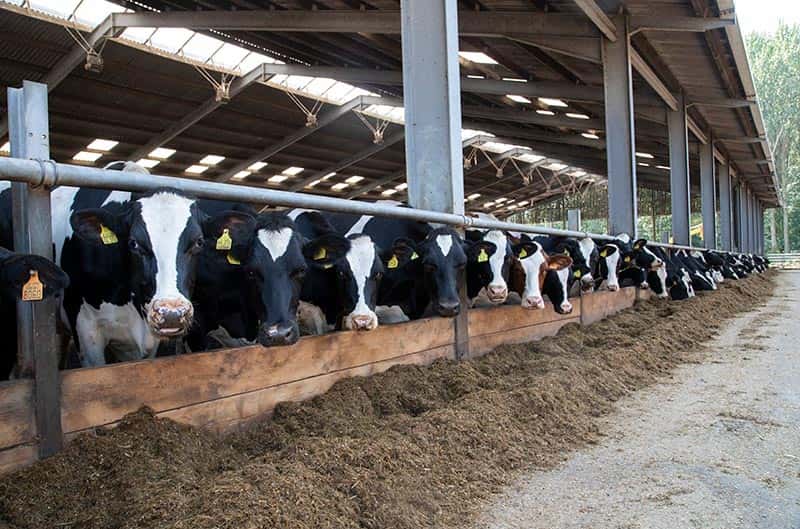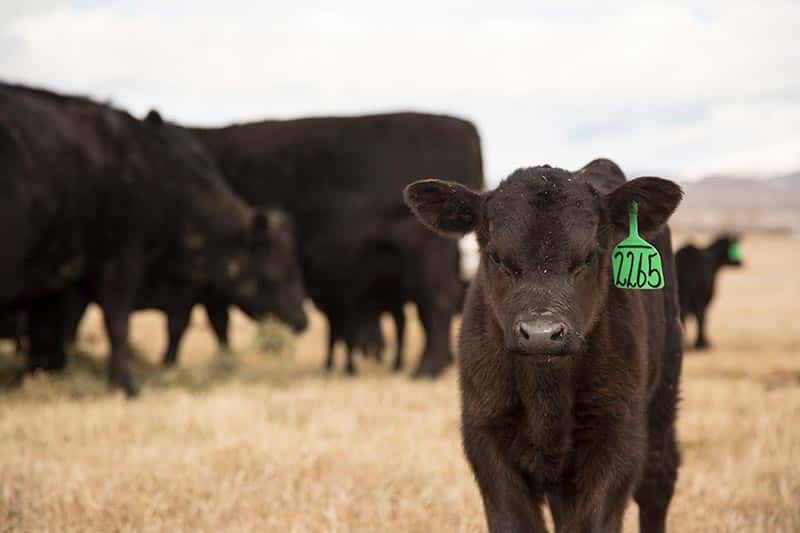In “The corn conundrum,” we looked at some of the causes of the dreaded “fall slump.” Now we will look at some of the ways to prevent the slump as well as tools to help diagnose it.
Dry matter at harvest
We all know the importance of proper dry matter at harvest. Checking whole plant dry matter for each field is a good first step to having the correct dry matter at harvest.
Chopping too early can lower the starch content of the corn silage and impede fermentation, which can also contribute to the environmental issue of leachate. On the other hand, chopping too late (>40 percent dry matter) can lead to a separate set of problems, such as mycotoxins, poor fermentation, yeast production, decreased starch digestibility and a longer window for total starch digestion.
If we monitor the seven-hour starch digestibility and ammonia levels of fresh corn silage, it can tell us a lot about how the corn is fermenting. Typically, fall corn silage will be low in both the seven-hour starch and ammonia. As the silage ferments over 240 days, the ammonia levels rise and the starch digestibility increases.
Silage inoculants and crop quality
We know that inoculants can speed up fermentation and lower pH, thus saving energy for the cow. Inoculants enable us to get into the piles, bags, bunkers and silos even faster than before.
Future outlook is strong is this area. Work is being done on combinations of inoculants and enzymes to assist in both starch digestion and fiber digestion, which will serve to further our efficiencies.
Inoculants can cater to front end fermentation or feed out protection. Cater your inoculant to your individual situation.
Inoculants coupled with a quality mold inhibitor can be the ultimate line of defense against molds, top spoilage and stability issues. Mold-Zap®, a buffered propionic acid, has been the gold standard in alleviating seasonal total mixed ration heating, but very keen dairymen also use it for preventing top spoilage in bunkers, drive over piles and on silage faces.
Corn Silage Processing Score
Shredlage, a new corn harvesting method for silage, is gaining acceptance. Most importantly, shredlage processing has led to a renewed interest in proper corn silage kernel processing with the choppers many producers already have. With proper corn silage processing, the kernels can be processed down to the new standard of ¼” kernels.
The Corn Silage Processing Score (CSPS) is a great testing tool that is run at virtually all the forage labs in the U.S. because it will assess how well the corn silage has been processed. A Corn Silage Processing Score in the 40–60 percent range is common in unprocessed corn silage and can equate to lost milk. Setting a goal of achieving a processing score above 70 percent will help you reduce the corn silage slump and the impacts it has on your herd.
Before we get CSPS numbers back, is there another way to know if we are correctly processing the corn silage? A new technique involving “floating” fresh corn silage is getting some attention, and it’s easy to find articles and images of the procedure online. The process is very simple and can be accomplished in the field, right at the chopper, but you will need a sample of fresh corn silage, a 5-gallon bucket and some water.
- Fill the 5-gallon bucket three-quarters full with water.
- Take a 32-ounce cup of fresh corn silage and pour it into the bucket of water.
- Stir it around for a few minutes.
- Sift out the fiber particles that float to the top.
- Dump the water and be sure to save the kernels.
- Inspect the kernels to ensure that most of the kernels are quartered. The old concept of “nicked” kernels being sufficient is now antiquated advice.
Monitor the back end
It is a dirty job, but someone really does have to do it. Manure can tell you a lot about how things are working inside the cow.
It’s worthwhile to consider a couple of tools that have been around for a few years.
The Penn State Particle Separator has been used for years to monitor fiber levels in the diet. The particle separator’s “messy” cousin, the manure screen, can tell you just as much, if not more. The true value of manure screening is monitoring over time and with ration changes. With the transition to new crop corn silage, you can see the impact of the new feed. Many times with new crop corn silage, you will see the kernel remnants in the middle screen and fiber changes in the various screens. Benchmarking your manure screens is a great approach because it will enable you to see what the rumen is doing and you can make ration adjustments quicker than if you use a paper-only approach.
While we are messing around with the manure, there is yet another tool that is underutilized, and that tool is fecal starch. Fecal starch testing is done at most commercial feed labs and can tell you a lot about kernel processing and starch digestion, so it can help you to confirm your CSPS scores and the level of starch digestion. Your goal should be to keep the fecal starch under 3 percent, even though you can commonly see the levels initially rise with new crop corn silage samples.
Aiding in the new crop silage transition
Some of the undigested corn can bypass the rumen and cause hindgut fermentation, which can lead to indigestion and rumen upset. The starch-digesting enzyme Amaize® and certain strains of Saccharomyces cerevisiae can assist in breaking down starch and maintaining a proper rumen environment.
Additionally, we know that soluble protein and ammonia levels are at lower levels in fresh corn silage. Products that assist in adjusting the rumen degradable protein levels can help jumpstart the rumen microbial production and assist in starch and fiber digestion. Optigen® can help fuel the rumen in the absence of good new crop soluble protein and ammonia levels.
Don’t feed it, but if you must…
Ultimately, the best way to reduce the fall corn silage slump is not to feed it. It may be frustrating to receive that advice, but it remains true. Starch digestion is often slow, and new crop corn silage should be given three months to properly ferment. Obviously, the longer the fermentation, the better, but there should be a plan in place to have a few months’ carryover of your corn silage crop.
When we must feed fresh corn silages, the tools discussed above can help to reduce the corn silage slump. Ask your local Alltech representative for more information on how we can help you to reduce the new crop corn silage blues.
Not sure who your local Alltech representative is? Fill out the form below to learn more.

























